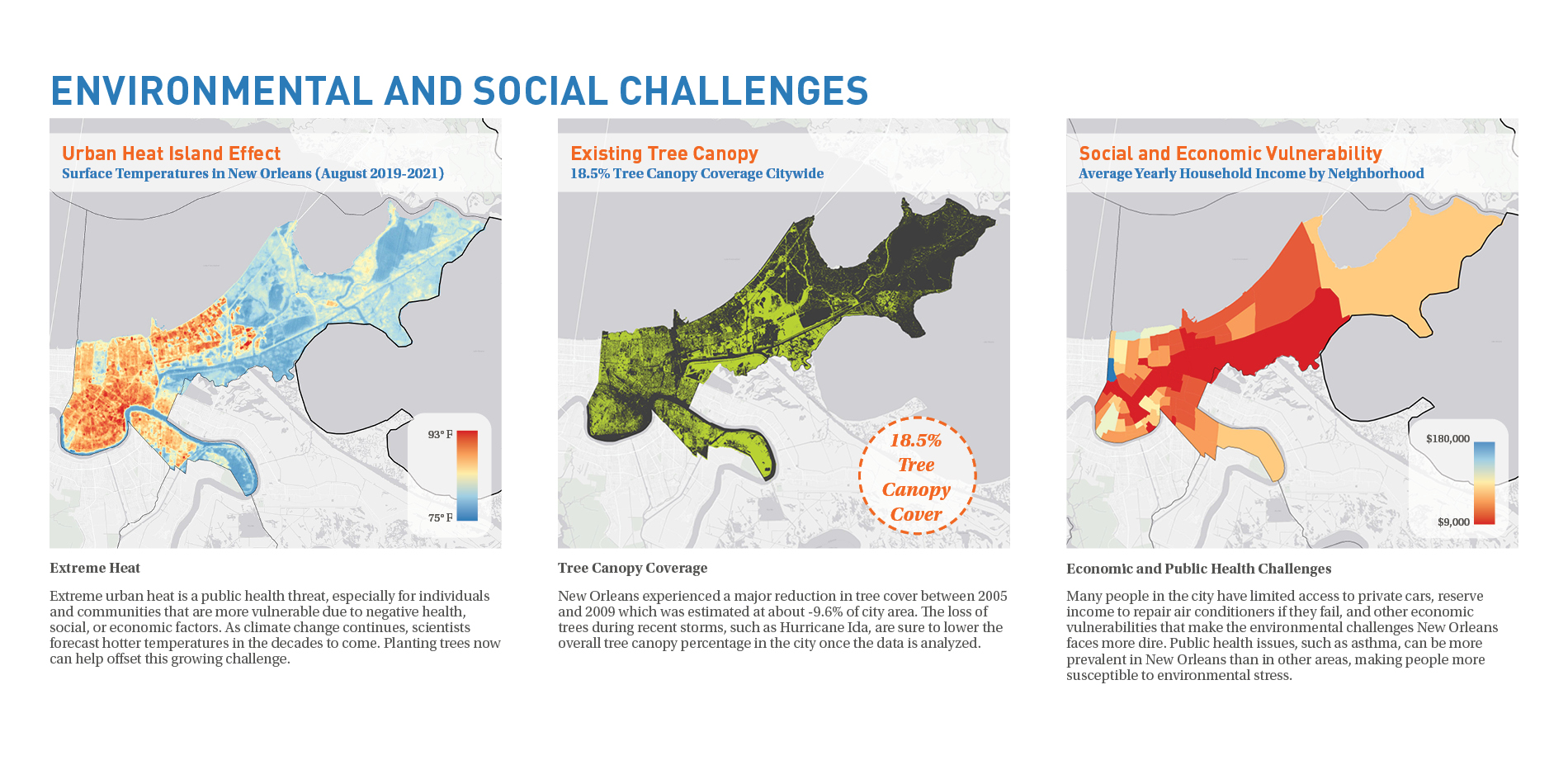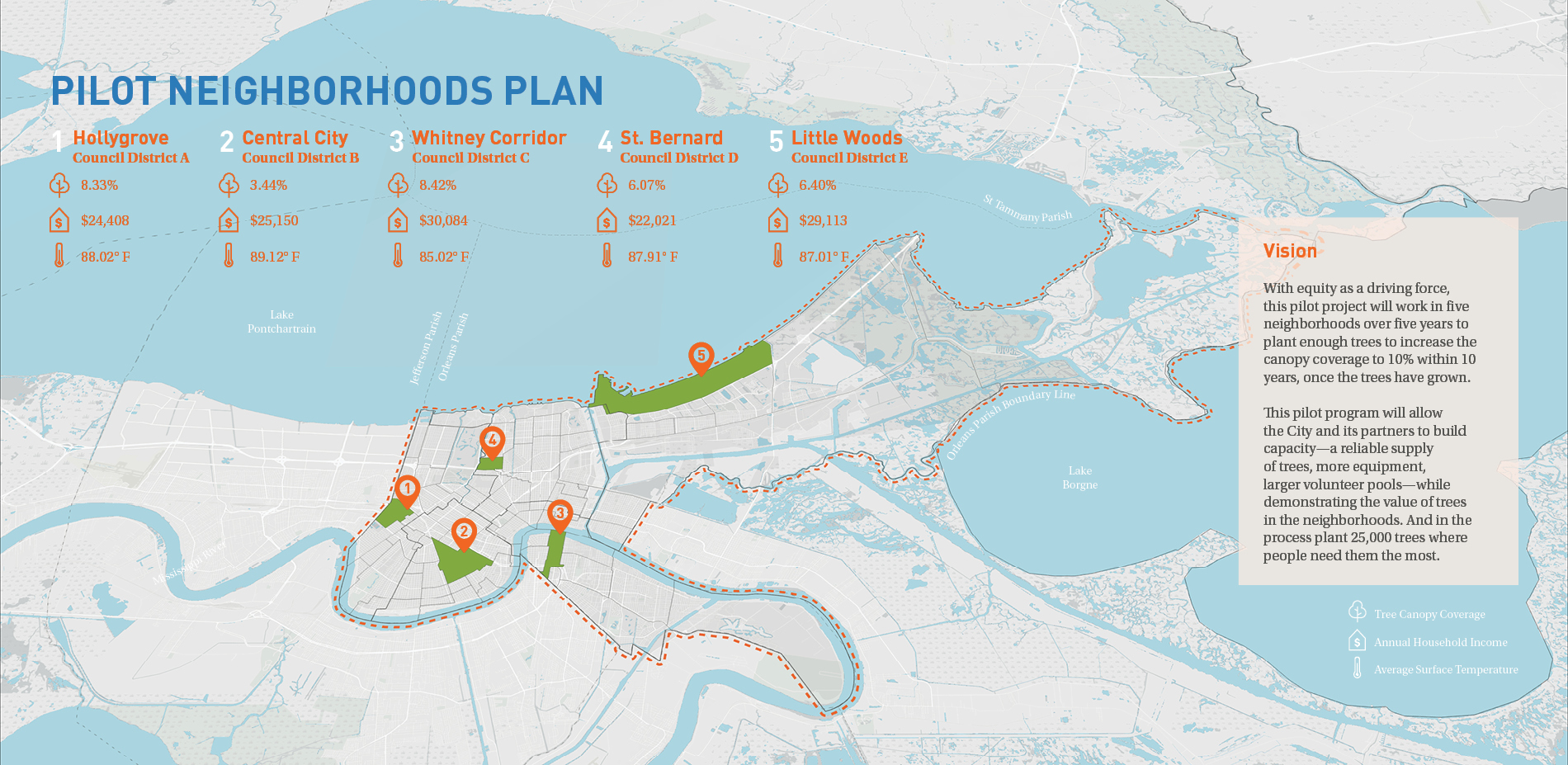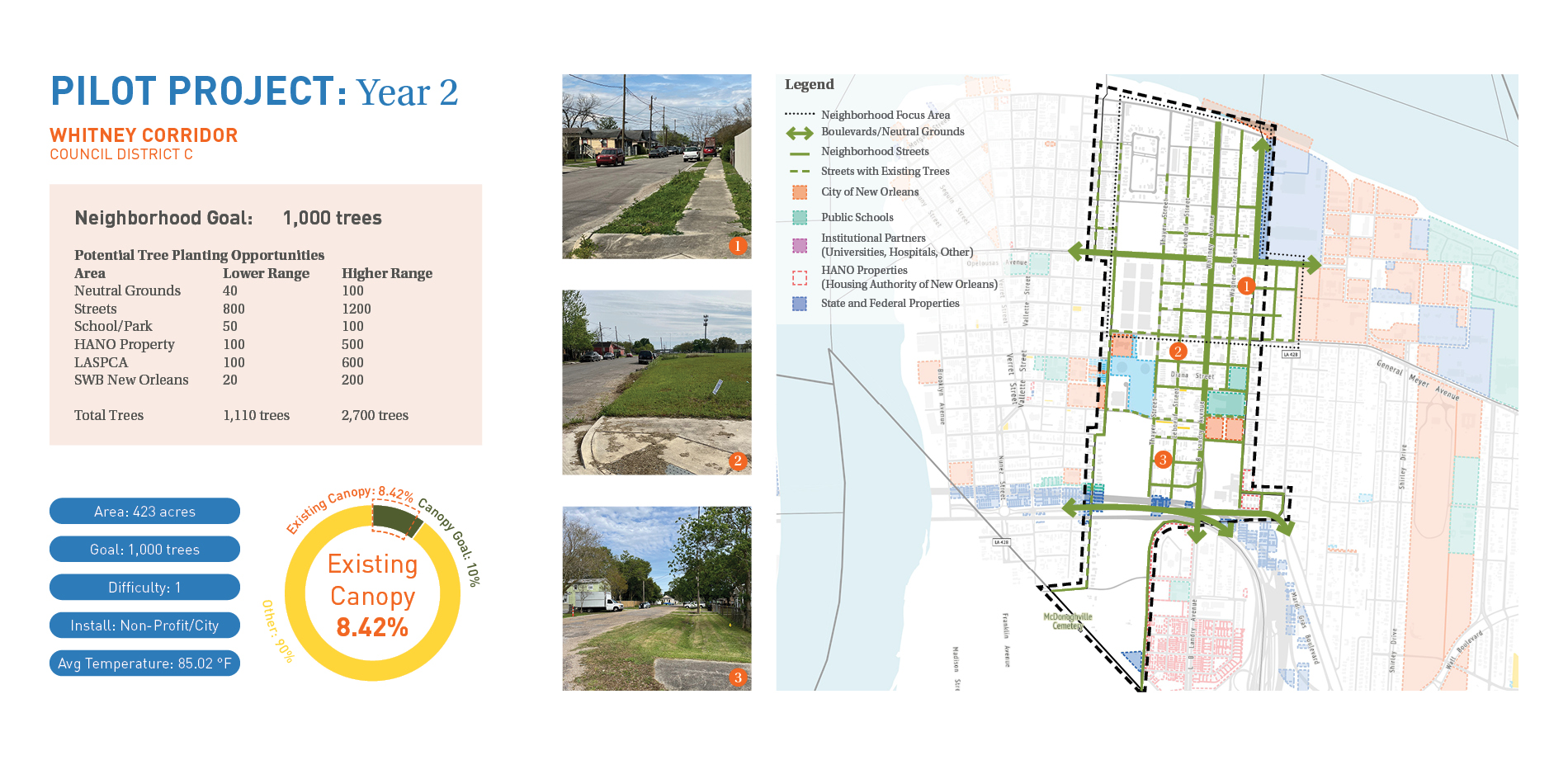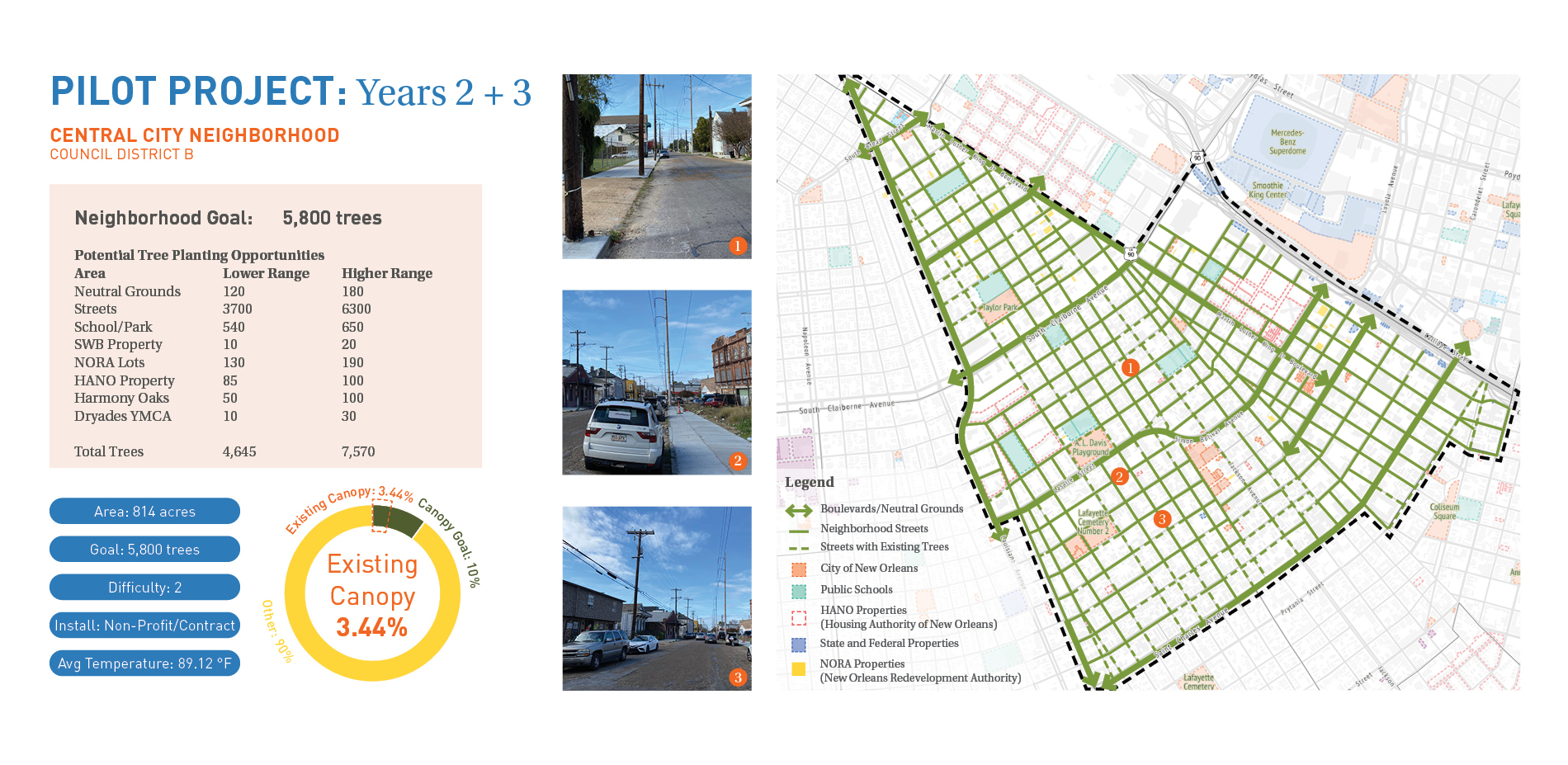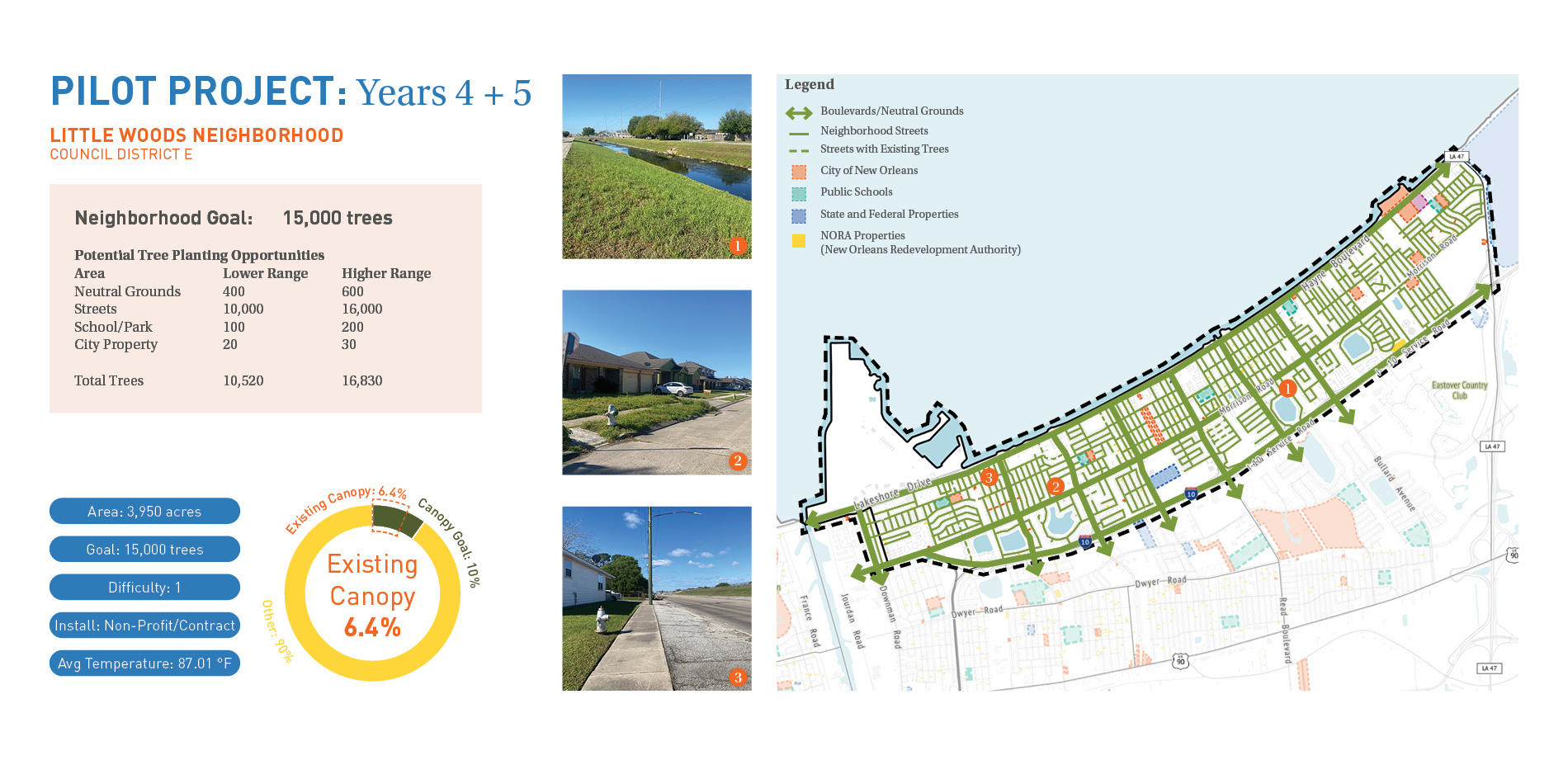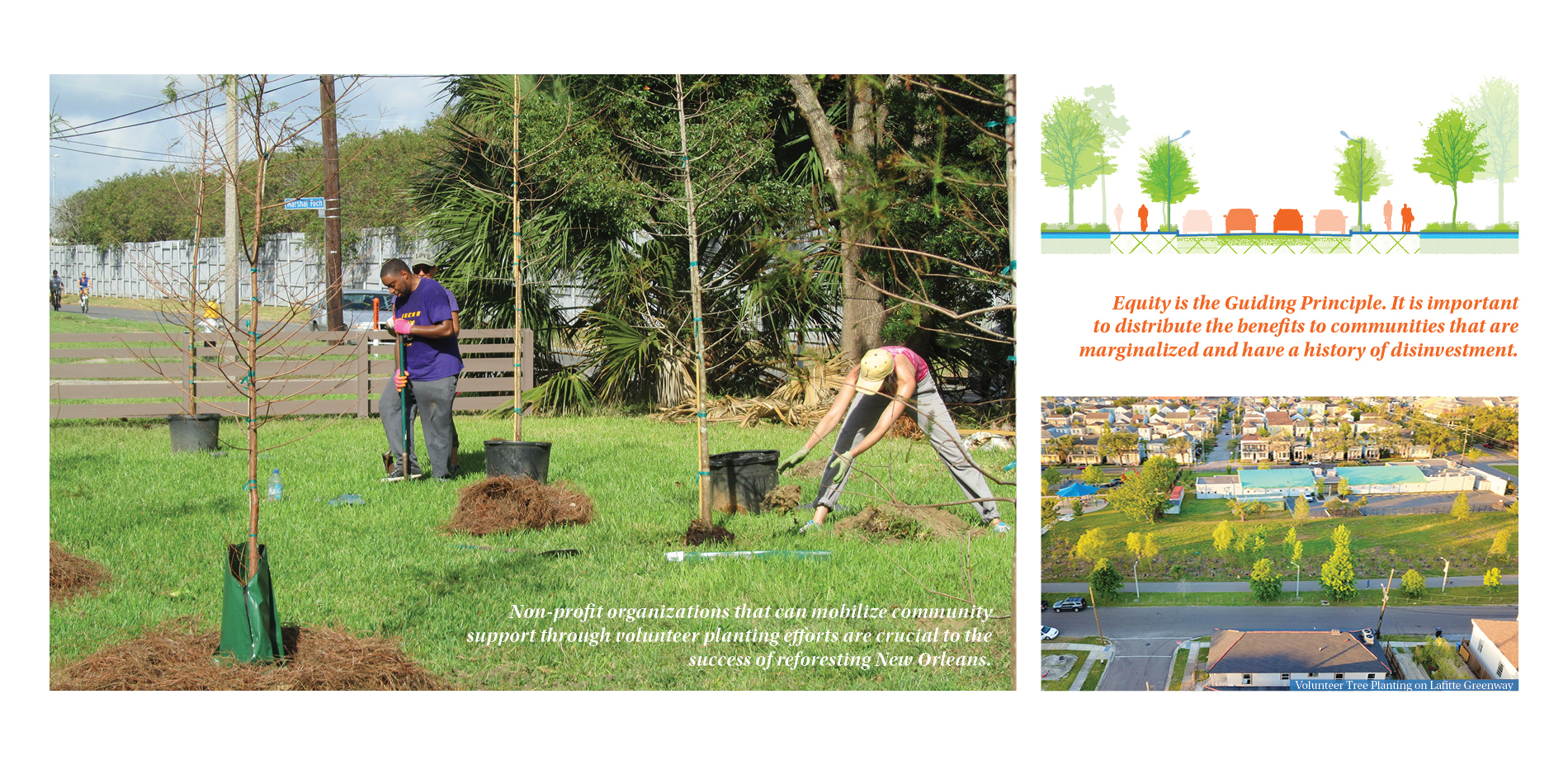The New Orleans Reforestation Plan: Equity in the Urban Forest
Honor Award
Analysis and Planning
New Orleans, Louisiana, United States
Spackman Mossop Michaels
Client: City of New Orleans, Saving Our Urban Landscape
This plan takes an equitable approach with a great community-centered planning effort. Every city should have a tree policy and a tree plan - a cornerstone of green infrastructure with clear social and environmental benefits. This project is a good example and an important reminder for doing so.
- 2023 Awards Jury
Project Credits
Saving Our Urban Landscape (SOUL), Project Partner & Client
City of New Orleans, Client
Traci Birch, Engagement Lead
Quantum Spatial, Data
CASA Systems, Data
Greg Nichols, City of New Orleans Office of Resilience & Sustainability, Advisory Team
Zach Monroe, City of New Orleans Office of Resilience & Sustainability, Advisory Team
Michael Karam, City of New Orleans Department of Parks and Parkways, Advisory Team
Paul Cramer, New Orleans City Planning Commission, Advisory Team
Haley Delery, New Orleans City Planning Commission, Advisory Team
Wes Michaels, Project Designer
Emily Bullock, ASLA, Project Designer
Pilar Zuluaga, Project Designer
Sophie Flinner, Project Designer
Tracey Armitage, Project Designer
Project Statement
New Orleans endures the worst urban heat island effect in the country. Despite the popular image of a city with towering Live Oaks, over half of the 72 neighborhoods in the city have less than 10% tree canopy. The New Orleans Reforestation Plan centers equity as the driving force to balance the access to the health and economic benefits of trees throughout the city. A 5-year pilot project focuses on planting trees in 5 neighborhoods while building capacity and—through a deep engagement process prior to planting—community ownership of the project. By 2040, the plan envisions a city where all neighborhoods, especially those without traditional forms of wealth or political power, have access to the health benefits of trees.
Project Narrative
New Orleans is known for its trees. Grand, majestic Live Oaks, towering Cypress, and flowering Magnolias line the streets and provide shade for people and homes. However, the trees in New Orleans are disappearing, and they are not being replaced at the rate of loss. Over 200,000 trees were lost in the city in the aftermath of Hurricane Katrina. The canopy still has not recovered.
New Orleans has the worst urban heat island effect in the United States—alongside Newark, New York City, Houston, and San Francisco—with an average temperature in the city that is about 9°F hotter than the surrounding rural or undeveloped land, while some areas of the city are upwards of 16°F hotter. While New Orleans does have neighborhoods with a healthy and robust tree canopy, the city as a whole is far behind the national average in percentage of tree canopy, at 18%.
Rather than set an overall canopy goal, which is a common approach to urban forestry plans, the New Orleans Reforestation Plan focuses on planting trees where communities need them the most.
Historical discriminatory housing practices like redlining, along with other socioeconomic factors, mean that communities of color are often in areas with fewer trees and parks and therefore are exposed to higher urban heat. Increasing urban heat island effect also escalates the burden of energy costs for cooling homes and buildings, so there are health and economic impacts to the lack of tree canopy in these neighborhoods.
A healthy urban forest can mitigate the impacts of the challenges facing the city. From cooler temperatures to protection from storms, to healthier and more prosperous communities, trees offer a number of benefits to the city that directly improve the lives of New Orleanians. Discussing the benefits of trees, while listening carefully to people’s concerns, is central to the ongoing engagement that will continue beyond the planning phase, and become a core part of implementation.
New Orleans residents were deeply engaged during the planning phase to voice their hopes and concerns about neighborhood reforestation. City agencies, non-profits, and technical advisors were also core stakeholders during the yearlong engagement. Throughout the listening process, and from all stakeholder groups, equity emerged as the foundational measure of success for the plan.
Rebuilding the urban forest in New Orleans will require protecting the existing trees in the city. It will also take a massive replanting effort—over many years—to replace the trees that are lost each year to natural causes, storms, and development. Most critical to the success of the plan, the reforestation of New Orleans must bring the benefits of trees to the neighborhoods that are the most vulnerable and help make the neighborhoods more livable.
The primary long-term goal of the plan is to restore 10% canopy coverage to all neighborhoods in our city by 2040. In preparation for this, a 5-year pilot program will allow the City and its partners to build capacity while demonstrating the value of trees to the community—and plant 25,000 trees where people need them the most.
Restoring New Orleans’ canopy will require a sustained, patient, tenacious effort, backed by robust supply chains, public support, funding, logistics, and community ownership. At its heart, this plan is an effort of hope and optimism for the future generations of New Orleanians, and their ability to thrive on a hotter planet.


